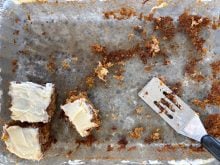This is the time of year when we like to consume hot soups, stews and casseroles. Slow cookers are a convenient, energy saving and safe way to cook when used properly.
Be sure to follow the directions in the appliance’s manual. Indirect heat, lengthy cooking time and steam created in the container destroy any bacteria that might be present.
Here are a few tips for the safe use of slow cookers:
- Always defrost foods before using them in a slow cooker.
- If the slow cooker is used to simmer a roast or whole chicken, check to see that the meat is thoroughly cooked by using a food thermometer.
- Vegetables take longer to cook than meat or poultry, so place them in the bottom and around the sides, then add the meat. Cover all the food with liquid such as broth or water and cover tightly with the lid.
- Don’t lift the lid to see how things are cooking because the steam will be lost and the cooking time will have to be increased.
- Food will stay safe as long as the cooker is operating.
- In the event of a power outage, if the power has been off for two hours or less, there should be no concerns. However, if the power goes out during the slow cooking, finish cooking by another means, such as stovetop, oven or barbecue.
- Bacterial contamination cannot be seen, smelled or tasted, so if the power was off for an indeterminate period of time or longer than two hours, it is best to throw away the food.
- Slow cookers should not be used to reheat leftovers.
Read Also

Producer profits remain under significant pressure
Manitoba farmers are facing down a double hit of high input costs, like fertilizer, and low grain prices as they harvest their next crop.
For answers to other questions about safe cooking, call the food safety consumer line at 800-892-8333. The Canada-wide consumer line is operated by home economists and is answered Monday through Friday, from 9 a.m. to 5 p.m. Information is also available on the Food Safety Information Society website at www.foodsafety
line.org.
Source: Agri-News Information Packaging Centre, Alberta Agriculture.
Winter vegetable stew
To make this winter vegetable stew, load the slow cooker in the morning. The good smell will welcome you home. I used a mix of wild rice and long grain brown rice and put it in the slow cooker along with the other ingredients, rather than adding instant rice or pasta later, as
suggested.
1 can (28 oz.) tomatoes 796 mL
1 can (14 oz.) vegetable 398 mL
broth
1 medium carrot, coarsely
chopped
1/2 green pepper, chopped
1 medium onion, chopped
2 celery stalks, diced
1 cup coleslaw mix, chopped
to finer pieces, or chopped
cabbage or potato 250 mL
1/2 teaspoon dried Italian 2 mL
herbs
1/2 teaspoon dried basil leaves 2 mL
1 teaspoon salt 5 mL
1/4 teaspoon freshly ground 1 mL
pepper
1 cup uncooked instant rice 250 mL
or small, shaped pasta
Combine all ingredients, except rice, in slow cooker. Cover and cook on low setting for six to eight hours. The stew can cook a little longer if you will not be home until later.
Add instant rice or pasta and cook for 15 minutes more. Serves three or four. It goes nicely with a pita pocket sprayed with oil, sprinkled with grated cheese and toasted in a toaster oven or under the broiler for a few minutes.
Source: Straight A’s College Cookbook: Quick Cooking for 1 or 2 by Karen Wokes, Sandy Hook Publishing, 2004.
You can order this from Centax Books for $18.95 by faxing 800-823-6829. It would make a great gift for people starting out on their own.
Bedding sizes
Dear TEAM: I would like universal measurements for making quilts and pillows exactly the size of a standard quilt or pillow. Also I’d like the measurements for a child’s, queen and king sizes. –
L.H., High Bluff, Man.
Dear L.H.: I discovered standard varies from cover to cover. For example, the
size for twin varied from 50 inches
wide x 80 inches long (127 x 203 cm)
to 76 inches wide x 96 inches long
(193 x 244 cm).
I saw one blanket called a twin that was only 70 inches long (178 cm), which would not cover the length of a twin bed. There is quite a range.
The most common twin seems to
be 66 inches wide x 90 inches long
(168 x 229 cm).
The most common double/queen was 90 x 90 inches square (229 cm), and the most common king was 108 inches x 90 inches (274 x 229 cm).
Having said that, they varied according to the type of bed cover. Perhaps it is best to know what size of mattress your quilt will be covering, and decide what you want for the overhang.
Perogie casserole
Our son-in-law really enjoys perogies, so I was eager to try this casserole before they came home again. It was sent in by P.B. of Arborfield, Sask., as a Christmas draw entry. You may vary the ingredients to suit the tastes of those who will be eating it. P.B. said that even though they are of French and Danish descent, this is one recipe they always use at Christmas and New Years.
1/2 cup green pepper, 125 mL
chopped
1 small onion, chopped
1 tablespoon butter 15 mL
10Ð12 frozen perogies
1-2 cups chopped ham 250-500 mL
1 cup grated cheese, 250 mL
varying kinds
1 can (10 ounces) 284 mL
mushroom soup
1/2 cup milk 125 mL
Sauté onion and green pepper in butter for five minutes. Combine with perogies. Mix soup and milk. Pour over the perogies, ham and cheese. Bake in a 350 F (180 C) oven for 1/2 hour.
Reader submission
This recipe was sent in for the Christmas draw, too, but it is good any time of the year. Our niece is getting married in February, and some of us aunties are making dainties. This makes an attractive addition to a tray of goodies at a shower, wedding or other party, especially when coloured marshmallows or cherries are used.
Chocolate log
Dear TEAM: Christmas would not be Christmas if my husband did not have this square. My husband does not enjoy squares because he finds them too sweet, but he does enjoy this one. – S.M.,
Odena, Sask.
1 cup chocolate chips 250 mL
1 cup butterscotch chips 250 mL
8 ounces cream cheese 250 g
4 ounces marshmallows 125 g
(15 large)
1 cup cherries and/or nuts,
chopped 250 mL
2 cups coconut 500 mL
Melt chocolate and butterscotch chips over hot water. Stir in cream cheese and marshmallows. After they are all mixed together, add cherries. Mix well.
Shape into a log on waxed paper. Roll in coconut. Use the wax paper to press into a log. Put into the fridge to set for four hours. Slice into 1/2 Ð1 inch (1-2.5 cm) rounds. Serve.
Barbara Sanderson is a home economist from Rosetown, Sask., and one of four columnists comprising Team Resources. Send correspondence in care of this newspaper, Box 2500, Saskatoon, Sask., S7K 2C4 or contact them at team@producer.com.
















